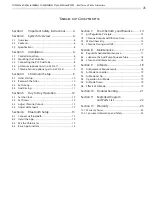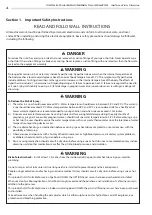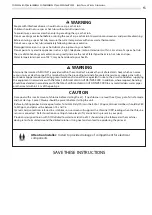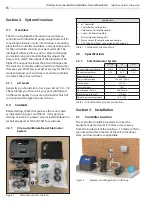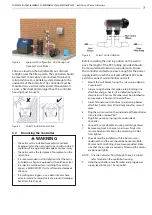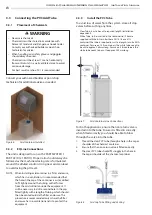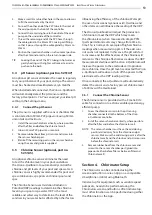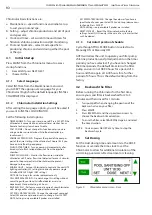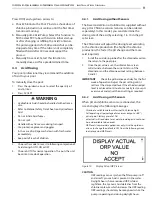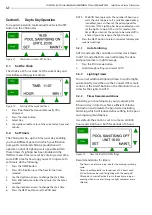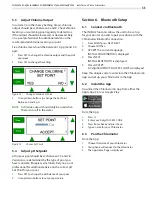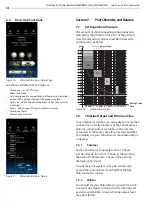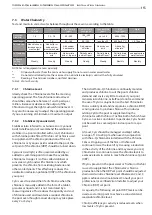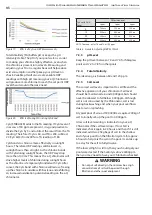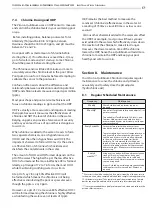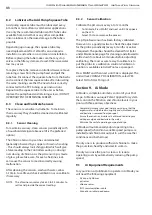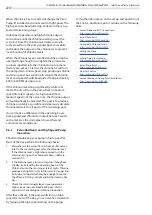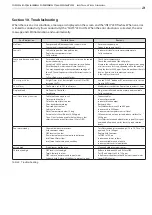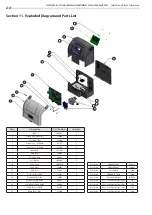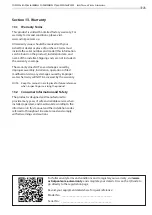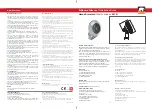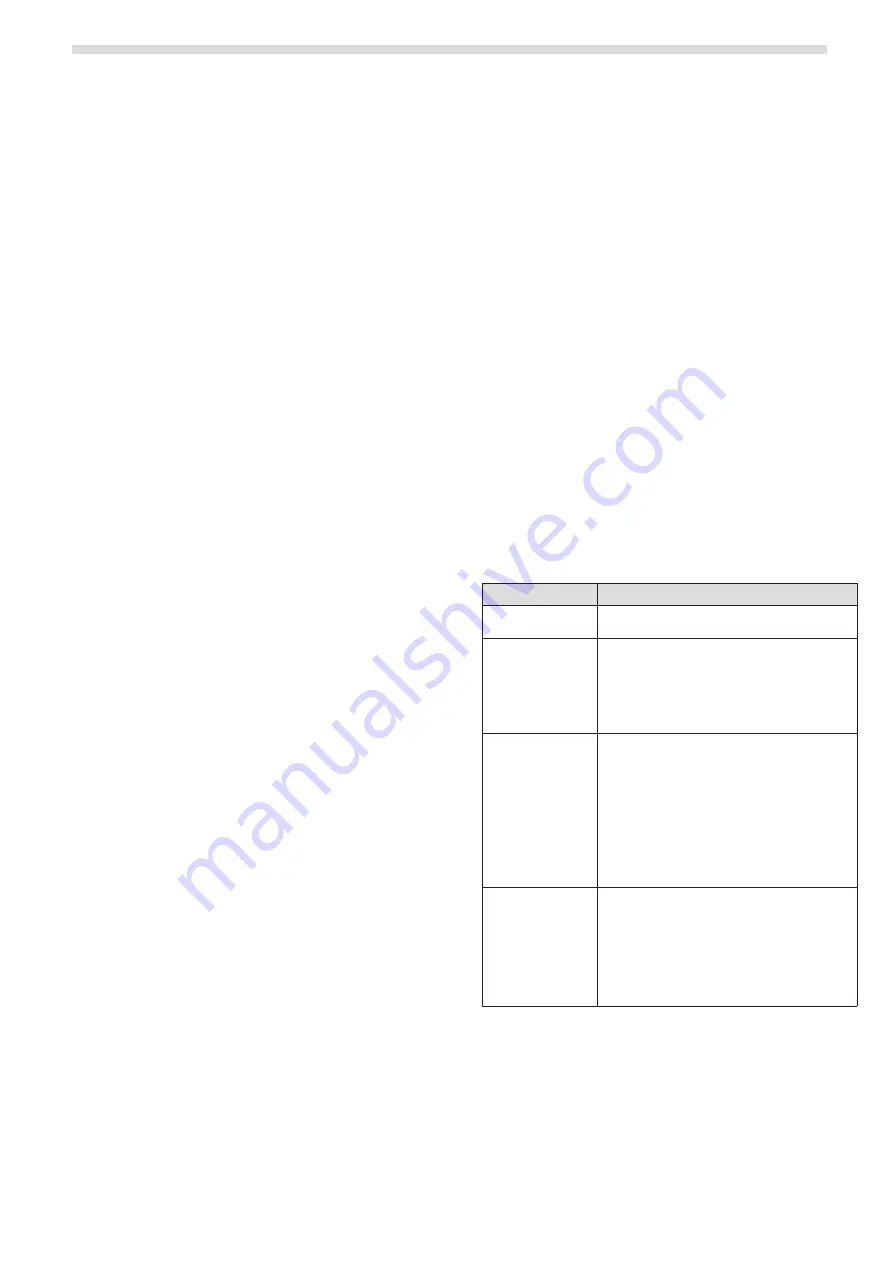
17
Viron e-Quilibirum Series Chlorinator
Installation Manual
16
Viron e-Quilibirum Series Chlorinator
Installation Manual
7.4
Chlorine Dosing and ORP
The Viron e-Quilibrium uses an ORP sensor to measure
and control the chlorine levels in your swimming pool
or spa.
Before installing probes, balance pool water. Total
Alkalinity (TA) must be 80 to 120 ppm, Calcium
Hardness should be 180 to 250 ppm, and pH must be
between 7.2 and 7.6.
Dose pool with a small amount of chlorine before
starting the e-Q. If no chlorine is sensed the e-Q may
go to fail safe mode and not start up. Some Chlorine
should be present before starting the unit.
The Chlorine sensor will take 45 minutes or more to
accurately sense the chlorine level in the pool. Allow
Pool pump to run for 45 minutes before attempting to
calibrate the sensor to the pool water.
Confusion often exists about the difference and
relationship between oxidization reduction potential
(ORP) and chlorine levels measured in parts per million
(ppm).
Most pool shops and pool service technicians will
focus on chlorine readings in ppm and not the ORP.
ORP is actually a more accurate and important reading
than ppm because it measures the effectiveness of
chlorine and NOT the level of chlorine in the water.
Relying on ppm can provide a false sense of security
and may even lead to use of a pool that is dangerous
to swim in.
When chlorine is added to the water it reacts to form
two separate chemicals, one is hypochlorus acid
(HOCl) and the other is hypochloric acid (HCl). The
important chemical to form is HOCl as it is the active
or effective form of chlorine which oxidizes and
disinfects the contaminants in the water.
The amount of HOCl and HCl formed depends on the
pH of the water. The higher the pH, the less effective
HOCl is formed and the more ineffective HCl is formed.
Ideally, a pH range of 7.2 to 7.6 forms the most HOCl
while maintaining soothing water to swim in.
At a pH of say 7.8, only 30% effective HOCI will
be formed which means the chlorine is not being
effective as disinfecting the pool or spa water even
though the ppm is 2 or 3 ppm.
However, at a pH of 7.2, a massive 80% effective HOCl
will be formed meaning the chlorine is highly effective
as disinfecting the water even at levels of 1ppm.
ORP remains the best method to measure the
sanitiser’s (chlorine’s) effectiveness in the water. At
a reading of 750mv a virus kill time is as low as one
second!
Various other chemicals added to the water can affect
the ORP. For example, most pools will have cyanuric
acid added to the water which effectively slows down
the reaction of the chlorine to make it last longer.
However, the slower reaction time of the chlorine
lowers the ORP, hence the e-Quilibrium will add more
chlorine to maintain the ORP and keep your pool
healthy and safe to swim in.
Section 8. Maintenance
Your Viron e-Quilibrium Chlorinator requires regular
maintenance to sense the chlorine and pH levels
accurately and to safely dose the pH adjuster
(hydrochloric acid).
8.1
Regular Scheduled Maintenance
Frequency
Maintenance
Weekly
Check Acid level and replace or top up as
required
Monthly*
Manual test for pH and chlorine and adjust eQ set
point as required
Test and adjust Total Alkalinity, CyA levels, and
Calciium Hardness levels and adjust to levels
recommended by your professional pool shop or
service technician
Every 3 months
Spray a surface insecticide on the surfaces
around the unit to prevent ant and insect ingress.
To protect against extremes of temperature, your
unit is vented to allow expensive electronics to
cool. Ants and some insects are often attracted
to the warner, dry environment inside the
enclosure. We recommend that, with power
turned off, you spray a surface insecticide on the
surfaces surrounding the control to prevent ant
and insect ingress. Repeat every three months or
as necessary
Every 6
months***
Using a cotton bud and Jif (non abrasive cleaner)
clean pH. Rinse in clean water or clean pool
water. Re install, allow 24 hours to settle and
sense correct levels. Adjust set points or calibrate
sensors as required
Inspect Acid tube, peristaltic pump squeeze tube
condition for cracks, wear and tear. Replace as
required
*
Water tests should be conducted by a professional pool shop or service
technician. Use a clean sample bottle and take sample from approximately
30 cm below water level. Take sample to pool shop immediately. Sample
bottles can usually be obtained from your local professional pool shop.
*** It is recommended that a pool professional test, clean and calibrate the
pH and chlorine sensors.

